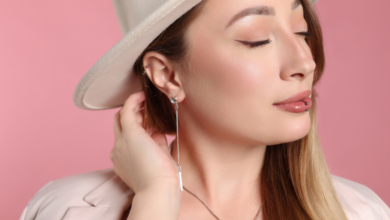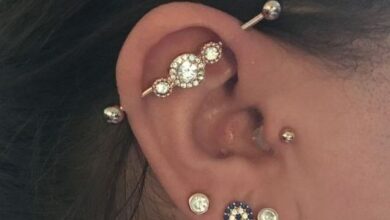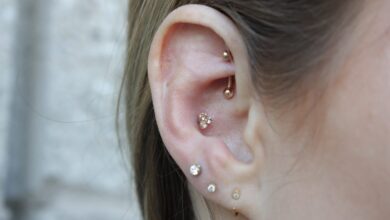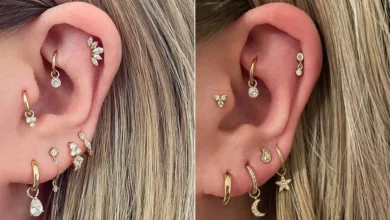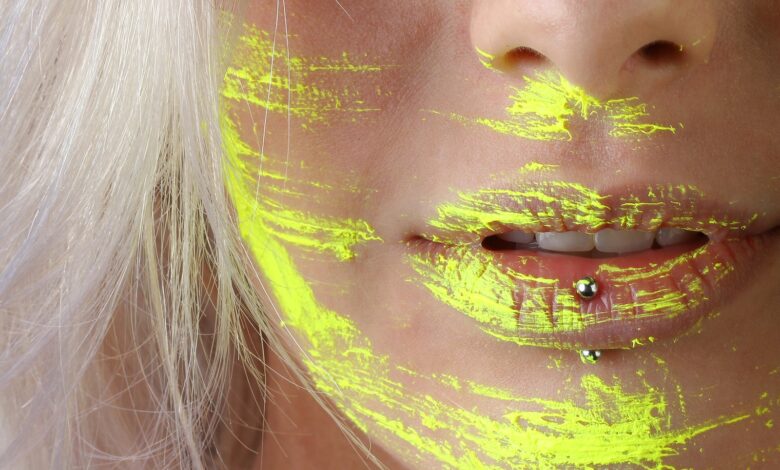
Are you considering getting a piercing but have some burning questions before taking the plunge? Look no further than the experts at stylish.ae, who are here to answer the most common queries about piercings. From aftercare tips to choosing the right jewelry, their team of professionals provide valuable insights and advice to ensure you have all the information you need for a stylish and safe piercing experience. So, whether you’re a piercing pro or a first-timer, read on to have all your questions answered by the experts at stylish.ae.

How to Choose a Piercing Studio
When it comes to getting a new piercing, choosing the right studio is crucial. You want to ensure that you are in a safe and reputable environment. Here are a few things to consider when selecting a piercing studio:
Consider the studio’s reputation
Before making a decision, take the time to do some research on the studio’s reputation. Look for reviews and testimonials from previous clients. Pay attention to both positive and negative feedback to get a balanced understanding of the studio’s quality of service. Additionally, ask for recommendations from friends or family members who have had piercings done before. They can provide valuable insights and help you make an informed decision.
Look for a clean and sterile environment
The cleanliness and sterility of the piercing studio are paramount. Make sure the studio follows strict hygiene practices to minimize the risk of infections and complications. Take a look around the studio during your visit and observe if the equipment and workstations are sanitized. The presence of an autoclave, a sterilization machine used for piercing tools and jewelry, is also a good sign that the studio takes hygiene seriously.
Check for proper certifications and licenses
Another important aspect to consider is whether the piercing studio has the necessary certifications and licenses. These credentials demonstrate that the studio meets the required health and safety standards. Look for certificates from recognized organizations or regulatory bodies in the piercing industry. These certifications indicate that the studio has undergone inspections and adheres to the best practices for performing piercings.
Take into account the piercer’s experience and expertise
The experience and expertise of the piercer are crucial factors to consider when choosing a studio. Find out how long they have been in the industry and inquire about their specific training and qualifications. A skilled and knowledgeable piercer will be able to provide accurate information, guide you through the process, and perform the piercing with precision and care. Don’t hesitate to ask the piercer questions about their experience and seek reassurance before proceeding with the piercing.
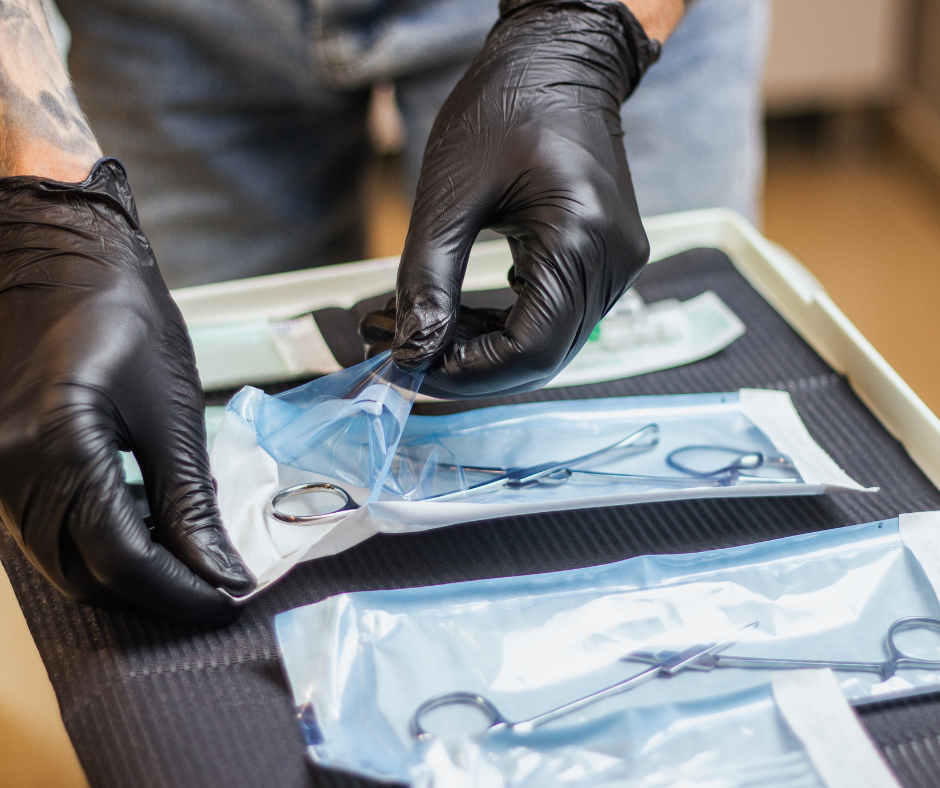
What to Expect During a Piercing
Getting a piercing can be an exciting and nerve-wracking experience, especially if it’s your first time. To help ease any anxiety, here is an overview of what you can expect during a piercing:
Preparation and consultation
Before the piercing, you will have a consultation with the piercer. This is an opportunity to discuss your desired piercing, ask any questions, and address any concerns you may have. The piercer will also assess your suitability for the chosen piercing and provide you with personalized recommendations.
Sterilization of equipment and piercing area
Once you are ready to proceed, the piercer will begin by sterilizing the equipment and the area where the piercing will be done. This step is crucial to minimize the risk of infections. The piercer will likely wear gloves and use sterile instruments throughout the process.
Positioning and marking the piercing
The piercer will then determine the optimal placement for the piercing and mark the spot using a sterile pen or marker. This step allows you to see the exact location and gives you the opportunity to provide feedback or make adjustments if desired.
The piercing process itself
Once you are comfortable with the placement, the actual piercing process will begin. The piercer will use a sterile needle or cannula to create an opening in your skin, followed by the insertion of the chosen jewelry. The entire process is usually quick and relatively painless, although discomfort and a temporary stinging sensation may be experienced.
Aftercare instructions
After the piercing is complete, the piercer will provide you with detailed aftercare instructions. These instructions will guide you on how to clean and care for your new piercing to promote proper healing and minimize the risk of complications. It’s important to follow these instructions diligently to ensure the best possible outcome for your piercing.
What Types of Piercings are Available?
Piercings come in a wide variety of styles and locations on the body. Here are some of the most popular types of piercings you can consider:
Earlobe piercings
Earlobe piercings are perhaps the most common and widely accepted form of body piercing. They are versatile and can be adorned with various types of jewelry, including studs, hoops, and dangles.
Cartilage piercings
Cartilage piercings are typically done on the upper part of the ear, such as the helix or tragus. They can be stylish and trendy, with options for hoops, studs, or decorative barbells.

Nose piercings
Nose piercings are a popular choice and can be done on different parts of the nose, such as the nostril, septum, or bridge. Elegant nose studs and rings are commonly used to complement these piercings.
Lip piercings
Lip piercings can add a bold and edgy look to your style. They can be done on different areas of the lip, including the labret, Monroe, or snake bites. Labret studs or rings are typically used for these types of piercings.
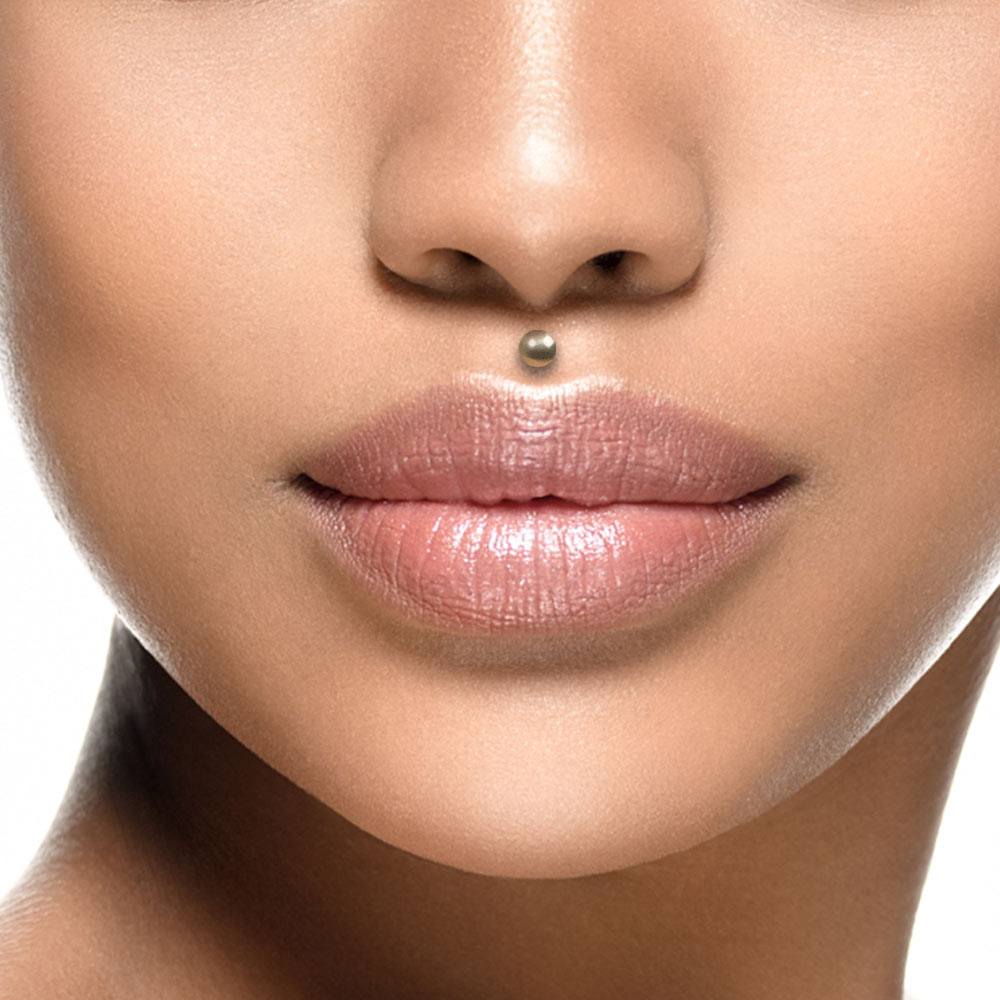
Eyebrow piercings
Eyebrow piercings can be a striking and unique addition to your appearance. They are done on the eyebrow ridge and can be adorned with curved barbells or eyebrow rings.
Tongue piercings
Tongue piercings can be both fashionable and functional. They are usually placed through the center of the tongue and are often fitted with straight barbells or tongue rings.

Navel piercings
Navel piercings, also known as belly button piercings, can be a stylish way to accentuate your midriff. They are typically done above the navel and can be adorned with banana bells or curved barbells.
Surface piercings
Surface piercings are placed on flat or curved surfaces of the body, such as the collarbone, back, or wrist. They require specialized jewelry, often in the form of surface bars.
Dermal piercings
Dermal piercings, also known as microdermals or single-point piercings, involve anchoring a piece of jewelry directly into the skin. These piercings can be placed almost anywhere on the body and create a unique and modern look.
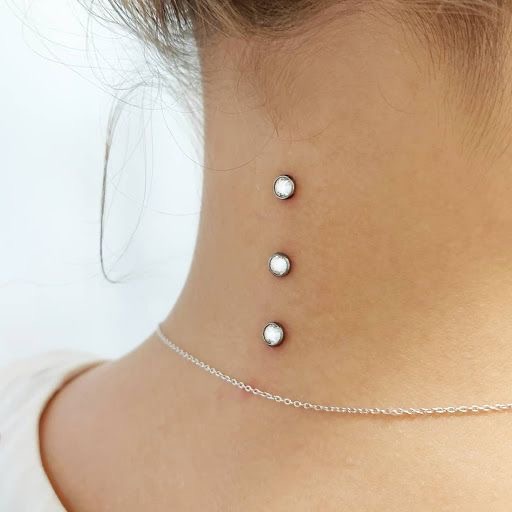
Are Piercings Painful?
The level of pain experienced during a piercing can vary depending on several factors, including individual pain tolerance and the specific location of the piercing. It is important to note that everyone’s pain threshold is different, so what may be painful for one person may not be for another.
The level of pain varies
Some piercings, like earlobe piercings, tend to be relatively painless since the earlobes consist mainly of soft tissue. On the other hand, piercings in areas with more cartilage or dense tissue, such as cartilage piercings or surface piercings, may be more uncomfortable due to the resistance of the tissue.
Factors affecting the pain level
Apart from individual pain tolerance, other factors can influence the pain level during a piercing. The skill and experience of the piercer play a role in making the process as painless as possible. Additionally, the thickness of the needle, speed of piercing, and level of pressure applied can also affect the pain experienced.
Ways to minimize pain during the piercing process
There are a few steps you can take to minimize pain during the piercing process. First, choose a reputable piercing studio with experienced piercers who can minimize discomfort by using proper techniques. Communicate openly with your piercer and let them know if you are feeling any pain or discomfort. Taking deep breaths and remaining relaxed can also help reduce pain and anxiety. Finally, following the aftercare instructions provided by your piercer can help promote healing and minimize pain during the healing process.
Which Jewelry is Suitable for Different Piercings?
The type of jewelry suitable for a particular piercing depends on various factors, such as the location of the piercing, personal style preferences, and the stage of healing. Here are some common types of jewelry used for different types of piercings:
Studs and hoops for earlobe piercings
Earlobe piercings typically use studs or hoops as initial jewelry. These can come in a variety of materials, such as surgical stainless steel, titanium, or high-quality gold, depending on your preference and any potential sensitivities.
Labret studs for lip piercings
Labret studs, which consist of a decorative top and a flat disc at the base, are commonly used for lip piercings. They are comfortable to wear and help minimize irritation.
Nose studs and rings for nose piercings
For nose piercings, nose studs or rings are popular choices. Nose studs can range from simple and subtle designs to more elaborate and decorative options. Nose rings come in various styles, such as captive bead rings or seamless rings.

Curved barbells for eyebrow piercings
Eyebrow piercings are typically adorned with curved barbells. These can be customized with different ball ends or decorative attachments to complement your style.
Straight barbells for tongue piercings
Tongue piercings commonly use straight barbells with rounded ends. The length of the barbell will be chosen based on the swelling that may occur during the healing process.
Banana bells for navel piercings
Banana bells, also known as curved barbells with a modified shape, are commonly used for navel piercings. The curved design allows for comfortable wear and reduces the risk of snagging or irritation.

Circular barbells for genital piercings
Genital piercings, such as nipple or genital piercings, frequently use circular barbells. These can be customized with different ball ends or unique attachments.
It is important to consult with your piercer to ensure that the jewelry chosen is appropriate for your specific piercing and healing process. They can provide recommendations based on your individual needs and help you select the best jewelry options.
How Long Does It Take for Piercings to Heal?
The healing time for piercings varies depending on several factors, including the type of piercing, individual healing ability, and adherence to aftercare practices. Here are some general guidelines for average healing times:
Average healing times for common piercings
- Earlobe piercings: 6 to 8 weeks
- Cartilage piercings: 6 to 12 months
- Nose piercings: 2 to 4 months
- Lip piercings: 2 to 3 months
- Eyebrow piercings: 6 to 8 weeks
- Tongue piercings: 4 to 8 weeks
- Navel piercings: 6 to 9 months
- Genital piercings: Varies significantly depending on the specific piercing and individual healing ability
Factors influencing healing time
Several factors can influence the healing time of a piercing. These include the individual’s overall health, the area of the body being pierced, the level of aftercare compliance, and any potential complications or infections.
Aftercare practices to promote healing
To ensure a smooth healing process, it is important to follow the aftercare instructions provided by your piercer. This may include cleaning the piercing with saline solution or a mild soap, avoiding touching or changing the jewelry prematurely, and keeping the piercing free from irritants or trauma.
Additionally, maintaining a healthy lifestyle, including a balanced diet, proper sleep, and avoiding excessive stress or smoking, can contribute to faster healing. It’s important to be patient and allow your body enough time to heal naturally without rushing the process.
Can I Change My Jewelry During the Healing Process?
It is generally recommended to wait until the piercing is fully healed before changing the jewelry. Changing jewelry too soon can disrupt the healing process, increase the risk of infection, and cause unnecessary pain and complications.
It is best to wait until the piercing is fully healed
Changing jewelry too early can introduce bacteria and irritate the healing wound. Even if the initial healing period has passed, it is important to consult with your piercer to determine if your piercing has fully healed. Your piercer will assess the condition of the piercing and provide guidance on the appropriate time to change jewelry.
How to properly change jewelry
When the time comes to change your jewelry, it is crucial to ensure proper hygiene and technique. Wash your hands thoroughly and use antiseptic or sterile gloves if available. Gently remove the existing jewelry while being cautious not to tug or cause any unnecessary discomfort. Clean the jewelry and the piercing site with saline solution before inserting the new jewelry to minimize the risk of infection.
Risks of changing jewelry too soon
Changing jewelry before the piercing is fully healed can lead to complications such as irritation, prolonged healing time, and potential infections. It can also cause the piercing hole to close, making it difficult or impossible to reinsert jewelry without seeking professional assistance. It is always better to err on the side of caution and wait for the appropriate time recommended by your piercer before changing jewelry.
What Are the Risks and Potential Complications of Piercings?
While piercings are generally safe when done in a reputable studio and with proper aftercare, there are some risks and potential complications to be aware of. Understanding these risks can help you make an informed decision about getting a piercing:
Infection
Infections can occur if the piercing site or jewelry becomes contaminated with bacteria. Signs of infection may include redness, swelling, pain, and discharge. If you suspect an infection, it is important to seek medical attention and follow the advice of a healthcare professional.
Allergic reactions
Some individuals may be allergic to certain metals used in jewelry, such as nickel. Allergic reactions can cause discomfort, redness, itching, and even skin rashes. If you have a known sensitivity to certain metals, be sure to discuss this with your piercer to choose appropriate hypoallergenic jewelry options.
Migration and rejection
In certain cases, the body may attempt to reject the piercing by pushing the jewelry out. This can result in migration, where the piercing moves away from its original placement. If you notice the jewelry consistently shifting or moving, consult with your piercer for further evaluation.
Scarring
Scarring can occur as a natural part of the healing process, especially if the tissue is not well cared for during the healing period. Proper aftercare practices can help minimize the risk of excessive scarring.
Nerve damage
In rare cases, piercings can damage nerves, potentially causing sensations of numbness, tingling, or hypersensitivity in the pierced area. It is essential to choose a skilled and experienced piercer to minimize the risk of nerve damage.
While these risks exist, choosing a reputable studio, following proper aftercare, and seeking professional advice when necessary can significantly reduce the likelihood of complications and promote a successful healing process.
How to Care for a New Piercing
Proper aftercare plays a critical role in the healing process and the overall success of your piercing. Here are some general guidelines for caring for a new piercing:
Cleaning instructions
Regular cleaning is essential to maintain cleanliness and hygiene around your new piercing. Follow the cleaning instructions provided by your piercer, which may involve using saline solution or a gentle cleanser specifically formulated for piercing care. Avoid using harsh soaps, ointments, or alcohol-based solutions, as they can irritate the piercing.
Avoiding irritants and trauma
During the healing process, it is important to avoid exposing your piercing to irritants, such as makeup, hair products, or chemical substances. These can cause irritation or infection. Additionally, be mindful of any activities that may pose a risk of trauma or excessive pressure on the piercing, such as rough contact sports or tight clothing.
Proper handling and touching
Avoid touching your piercing unnecessarily, as it can introduce bacteria and disrupt the healing process. If you need to touch the piercing for cleaning or jewelry adjustments, make sure your hands are clean and handle the piercing gently using only clean, preferably sterile tools.
What to do in case of infection or complications
If you suspect an infection or experience any complications with your new piercing, it is important to seek professional advice. Contact your piercer or consult with a healthcare professional promptly to receive appropriate treatment.
By diligently following these aftercare practices, you can promote proper healing and maintain the health of your new piercing.
How to Deal with Piercing Aftercare
Piercing aftercare requires consistency and commitment to ensure optimal healing and minimal complications. Here are some tips to help you navigate the aftercare process:
Stick to the recommended aftercare routine
Stick to the aftercare routine provided by your piercer. This may include cleaning the piercing with saline solution or a specific cleanser multiple times a day, avoiding harsh chemicals or irritants, and minimizing trauma to the piercing site.
Tips for managing pain and discomfort
It is normal to experience mild pain, swelling, or discomfort during the initial healing period. To manage these symptoms, consider taking over-the-counter pain relievers as directed by your healthcare professional. Applying a cold compress or ice pack to the piercing area may also help reduce pain and swelling.
Avoiding certain activities and substances
During the healing process, it is important to avoid activities that can compromise the healing of your piercing. This may include swimming in pools, hot tubs, or bodies of water, as well as engaging in activities that may cause excessive sweating or rubbing against the piercing. Additionally, avoid smoking, consuming alcohol, and touching the piercing with dirty hands.
Signs of infection or complications to watch out for
Keep a close eye on the progress of your piercing and watch for any signs of infection or complications. This includes increased redness and swelling, persistent pain, heat or warmth around the piercing, foul odor, discharge, or the presence of a fever. If you notice any of these symptoms, seek medical attention for proper diagnosis and treatment.
By adhering to the recommended aftercare routine, managing any discomfort appropriately, and monitoring your piercing for potential problems, you can help ensure a successful healing process and enjoy your new piercing to the fullest.

